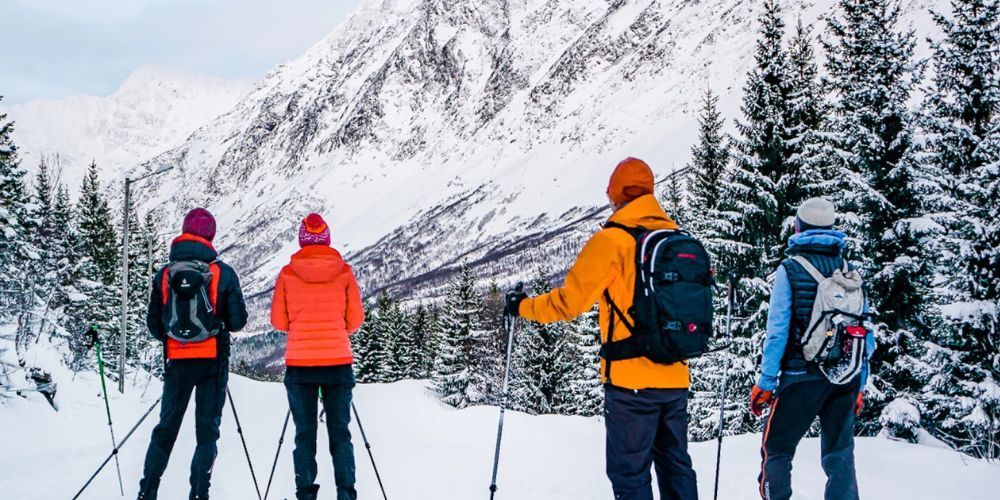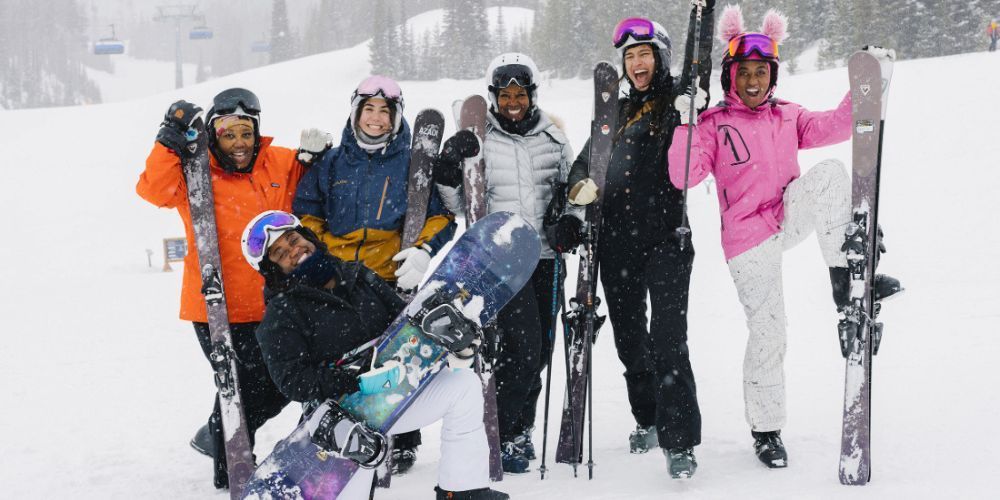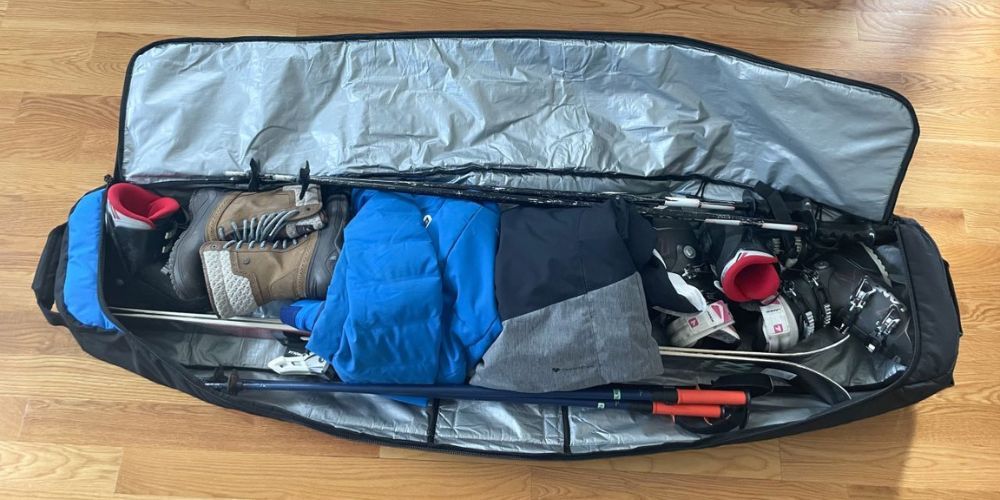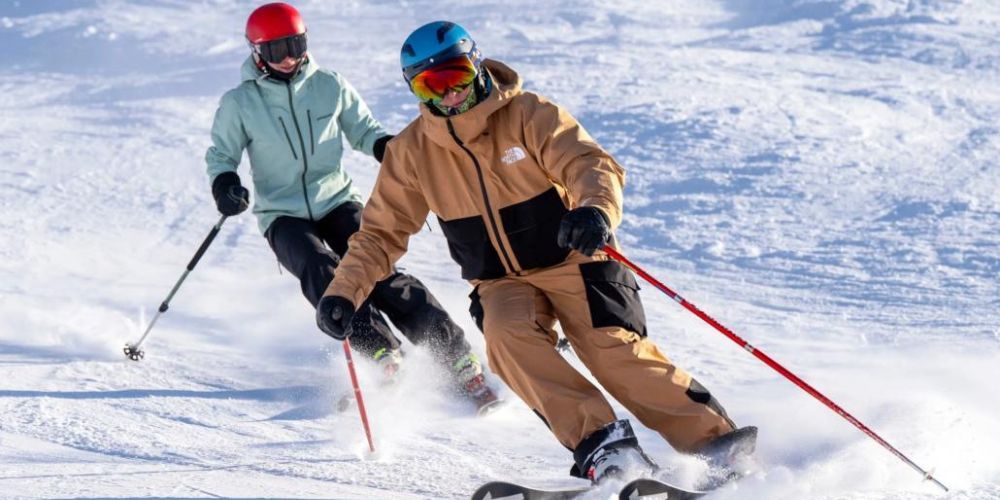William Flaiz is a lifelong athlete and outdoor enthusiast with a deep passion for adventure and sports. With over two decades of experience competing in marathons, triathlons, adventure races, and a wide range of recreational activities, William brings a wealth of knowledge to Sports and Nature Gear. Having explored 49 U.S. states and over 25 national parks, his extensive travels and hands-on experience with gear and gadgets provide readers with practical, expert advice for their own outdoor adventures. Whether it’s running, biking, kayaking, or hiking, William’s insights are invaluable to anyone looking to enhance their experience in the great outdoors. Read his full bio.
Ski Poles Explained: Types Features and Tips for Buying
Choosing the right ski poles may seem like a minor detail in your skiing gear checklist, but it can greatly impact your performance and safety on the slopes. Whether you're carving through hard-packed snow or gliding through powdery trails, having poles that match your needs is essential. The variety of options available—from materials to grip types—can indeed be overwhelming. However, this comprehensive guide aims to help you navigate these choices effortlessly.
We've spent countless hours researching and gathering insights from seasoned skiers and experts so you can have a hassle-free buying experience. Understanding key features such as material composition, grip comfort, adjustable lengths, and basket types will set a strong foundation for making an informed decision. Each characteristic plays a significant role in enhancing your overall skiing experience. Now let's dive into these essential aspects in more detail.
When choosing ski poles, consider factors such as the type of skiing you will be doing (such as resort, backcountry, or freeride), the material composition (lightweight aluminum or carbon fiber), and the necessary length based on your height. Additionally, look for features like adjustable heights for comfort and appropriate basket types to optimize performance in various snow conditions.
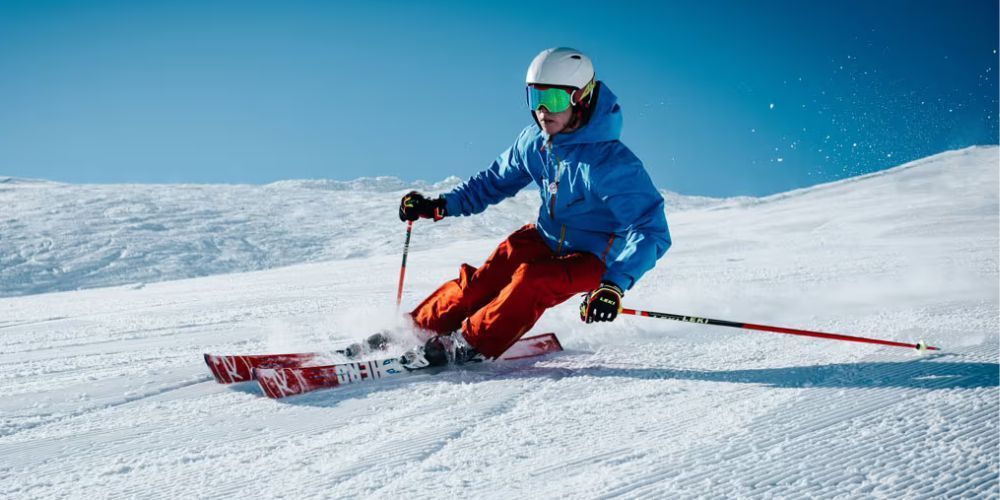
Best Features to Look for in Ski Poles
Material Composition
The material composition of ski poles is one of the most critical aspects to consider. You’ll primarily encounter aluminum and carbon fiber poles on the market. Aluminum poles are often preferred by beginners due to their durability and affordability; they can withstand impacts without denting easily. However, these poles tend to be heavier, which might lead to quicker fatigue during long skiing sessions.
In contrast, carbon fiber poles are lauded for their lightweight nature, enhancing overall performance. This material significantly reduces fatigue, allowing for longer days on the slopes. Yet, just as with other premium products, carbon fiber poles usually come with a higher price tag. It’s essential to weigh these factors against your budget and skill level before making a choice.
Grip Types
Equally important is the type of grip on your ski poles – this area directly impacts comfort and control. You’ll find grips made from several materials: rubber, foam, and cork.
Rubber grips are extremely durable and offer excellent anti-slip properties, making them a popular choice for reliability. On the other hand, foam grips provide additional comfort because they absorb vibrations during use. This characteristic enhances your skiing experience, especially on rugged terrain.
Finally, cork grips stand out for their premium feel and high-level comfort but are generally restricted to more expensive models. Choosing the right grip comes down to personal preference, so it's advisable to try out different options when you can.
Adjustable Length
Another feature that should not be overlooked is adjustable length. Many ski poles now come equipped with telescoping mechanisms that allow you to modify the length based on terrain and skiing style. This flexibility is particularly advantageous when navigating various challenges; you may want a shorter pole when going downhill for better control or a longer one when climbing uphill.
A reliable locking system is crucial – you don’t want your pole collapsing mid-ski! Thus, ensure that any adjustable poles you consider have secure locking mechanisms that will keep everything in place no matter how hard you're pushing through soft snow or steep inclines.
Basket Types
Lastly, we cannot ignore the significance of basket types in skiing. The basket is the round disc located at the bottom of each pole designed to prevent sinking into the snow. Smaller baskets work well on firm, packed surfaces since they reduce drag and provide stability. Conversely, larger powder baskets are indispensable for loose or deep snow conditions; they help distribute weight and prevent your pole from getting buried too deep.
Matching your basket type with snow conditions can greatly influence your overall skiing experience.
Understanding these features will enhance your performance and ensure a comfortable day spent on the slopes. With this knowledge in hand, it’s time to explore what specific brands and models offer in terms of quality and suitability for your skiing needs.
Brands and Models Overview
When it comes to ski poles, several brands stand out for their commitment to quality and performance. Each brand brings its unique technology and design approaches, catering to a range of skier preferences and needs.
Let's explore some of the most well-regarded manufacturers on the market today.
LEKI: This brand has built a solid fan base thanks to its innovative designs, particularly the Trigger 3D grip system. This feature not only secures the skier's hand but also allows for an easy release in cases of emergency. A top model, the LEKI Detect S, is widely praised for its lightweight construction and exceptional safety features. Skiers often highlight how smoothly they can transition in and out of the poles due to this thoughtful engineering.
Black Diamond: Known for its robust reputation in mountain sports, Black Diamond offers poles like the Traverse model, designed with durability in mind for backcountry skiing. These poles are built to withstand rugged terrains while providing reliability and support that avid adventurers crave.
Komperdell: If you're looking for lightweight options without sacrificing stability, Komperdell is worth considering. Their models, such as the National Team Carbon poles, exemplify advanced materials utilization—perfectly suited for professional skiers who need enhanced shock absorption while maintaining agility.
What sets these brands apart is their understanding of how different terrain types can affect pole performance, leading them to develop unique products tailored for various skiing experiences.
For instance, poles built for backcountry skiing prioritize durability and sturdiness, while those designed for groomed runs focus more on lightweight properties and speed. This differentiation in design showcases the brands' grasp of skiing dynamics and their commitment to meeting diverse needs on the slopes.
The choice in ski pole brands ultimately reflects individual skiing styles and environmental conditions faced during activities. Whether you prioritize safety features, weight reduction or shock absorption, there's likely a model from one of these trusted brands that aligns perfectly with your skiing aspirations.
With an understanding of these brands and models, we can now consider how ski poles perform in varied conditions—exploring their adaptability to different environments allows us to gain deeper insights into enhancing your experience on the slopes.
Different Terrain Adaptations
Skiing on different terrains requires poles specifically designed to handle unique conditions. If you're hitting groomed runs at a ski resort, you need poles that are both lightweight and sturdy enough to provide stability without weighing you down. Poles like the Leki Spitfire S exemplify this blend of performance perfectly. Its medium-sized baskets are ideal for navigating occasional bumps while still allowing for easy pole planting on smoother surfaces. This design ensures skiers can maintain their rhythm, carving through turns effortlessly as they enjoy their day on the slopes.
Moving away from the resort trails, backcountry skiing presents its own set of challenges. Here, the terrain can be unpredictable, necessitating gear that adapts readily. Consider poles like the Black Diamond Razor Carbon Pro, which features adjustable lengths and deployable powder baskets. These attributes make all the difference when venturing into deep snow where conditions are less controlled. With an adjustable length, you can modify the pole height based on changing terrain—critical when climbing slopes or traversing flat areas in fresh powder.
The adaptability of these poles not only boosts performance but also enhances safety; collapsing or extending them as needed helps maintain balance and control during descents or in tricky conditions.
Furthermore, terrain types dictate pole construction materials, which play a crucial role in user experience. Traditional aluminum poles are typically sturdier and more reliable for resort skiing where care-free performance is needed. However, lighter carbon fiber options shine in backcountry scenarios thanks to their ability to minimize fatigue during lengthy excursions. Choosing the right material according to your skiing style can significantly impact your overall comfort.
With these insights about terrain-specific adaptations established, understanding how various basket types play a role in optimizing your skiing experience becomes equally important.
Comparison of Basket Types
The type of basket you choose for your ski poles can significantly influence your skiing experience. Baskets serve as a point of contact between your poles and the snow, which means their design directly impacts how well you maneuver in different conditions.
Small Baskets
Small baskets are often the choice for packed snow and groomed slopes. Their compact design allows for greater agility, helping you maintain control during turns and quick movements. They glide effortlessly across the surface without plunging too deeply into softer conditions. However, while small baskets shine on hard-packed trails, they can struggle in soft powder, where they might sink rather than provide the floatation needed to push through deep snow.
As we move from smaller designs, it's essential to consider alternatives that cater specifically to powder conditions.
Large Baskets
On the flip side are large powder baskets, engineered to prevent sinking in soft snow conditions. These larger baskets create a broader footprint on the snow surface, enabling skiers to glide more easily over powder. Brands like LEKI have approached this intelligently by offering interchangeable baskets such as the Cobra and Big Mountain options. This adaptability allows skiers to switch out their baskets according to current conditions, enhancing both safety and performance.
It's important to recognize that using the right basket type doesn't just improve performance; it also contributes significantly to your energy efficiency on the slopes.
Ultimately, the selection of ski pole baskets should center around your skiing style and typical terrain. If you find yourself mostly cruising on groomers, small baskets will serve you well. Yet, if powder skiing captivates your weekends, opt for those larger varieties designed specifically to handle deeper snow effectively.
In addition to understanding basket types, taking care of your ski equipment remains vital in ensuring longevity and peak performance—next, we'll explore essential ways to maintain your gear for optimal use on the slopes.
Maintaining Your Ski Equipment
Regular upkeep of your ski equipment, especially your ski poles, is essential for maximizing your time on the slopes. Just think about it; after a thrilling day cruising down the runs, your gear doesn't just pack itself away neatly. Skis and poles come into contact with snow, dirt, and moisture, which can lead to detrimental effects over time.
Cleaning and Storage
After each outing, take a moment to clean your ski poles by removing any dirt or snow that may have accumulated. Use a soft cloth or sponge dampened with lukewarm water to gently wipe them down. It's incredible how much dirt can cling to them without you even noticing. Pay special attention to the grips and baskets since this is where most of the grime resides. Once cleaned, dry them thoroughly before storing.
It’s also vital to store your poles in a dry environment. If you live in an area with high humidity or near the ocean, corrosion can become a serious issue, particularly with aluminum poles. I often recommend placing your poles in a climate-controlled space if possible. A simple hanging rack in a closet away from wet conditions can work wonders for prolonging their life.
Checking and Replacing Parts
In addition to regular cleaning, it’s important to perform a quick inspection of your ski equipment before hitting the slopes. Make it a habit of checking components like grips and baskets routinely. For example, if you notice that the grips feel slippery or worn, they may not provide adequate control during skiing maneuvers. Replacing them promptly improves comfort and enhances your overall performance while skiing.
It's helpful to familiarize yourself with brands that offer replacement parts for wear-and-tear components—like LEKI’s Trigger grips—making it easy to keep everything functional rather than replacing entire poles. The process is generally straightforward: removing old parts usually requires minimal tools, ensuring you won't waste valuable time getting ready for another ride down the mountain.
When you maintain your ski poles properly, you're not just looking at short-term aesthetics; you're safeguarding the overall integrity and functionality of your gear.
By incorporating these small but significant maintenance steps into your routine, you'll ensure that your skiing experience remains safe and enjoyable year after year. As we proceed, consider how these practices play into broader themes of investment and longevity in your equipment choices.
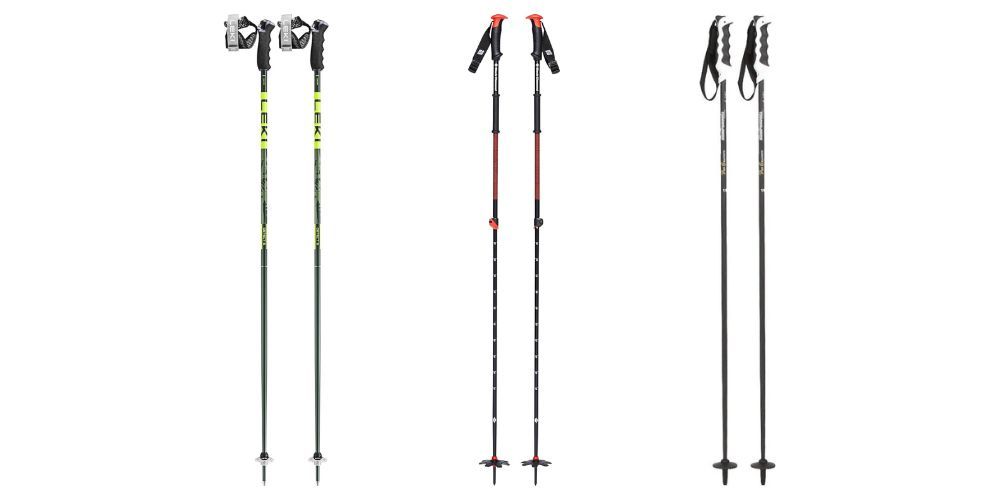
Balancing Cost and Quality
When shopping for ski poles, understanding the relationship between price and performance can lead to wiser choices that enhance your time on the slopes. While it’s tempting to go for the lowest-priced option, consider how different materials affect both functionality and your overall skiing experience.
Generally speaking, aluminum poles offer high durability at a lower cost but come with extra weight that might tire you out sooner during long runs. For the casual skier heading to the mountain a few times each season, these are often more than adequate. However, if you're someone who hits the slopes frequently or seeks to maximize performance, investing in lightweight carbon fiber poles might be worth every extra dollar.
The difference in skiing enjoyment between heavier and lighter poles is remarkable; lighter poles allow for better agility and less fatigue over time.
As you weigh your options, consider not just the initial purchase price, but also the longevity and resilience of your equipment. Carbon fiber poles are generally known for their exceptional strength-to-weight ratio, which means they perform well under pressure while also cutting back on fatigue. This factor can be especially crucial during those thrilling powder runs where every little bit of energy counts.
Tips for Effective Decision-Making
When choosing between aluminum and carbon fiber options, pay attention to the details. It's beneficial to see how much you plan on using the poles throughout the year. For instance, if you anticipate frequent excursions on varied terrain, it may be wise to stretch your budget for better materials but also keep in mind maintenance costs associated with advanced materials. Additionally, taking into account features such as grip style and adjustability can dramatically influence your overall satisfaction with the purchase.
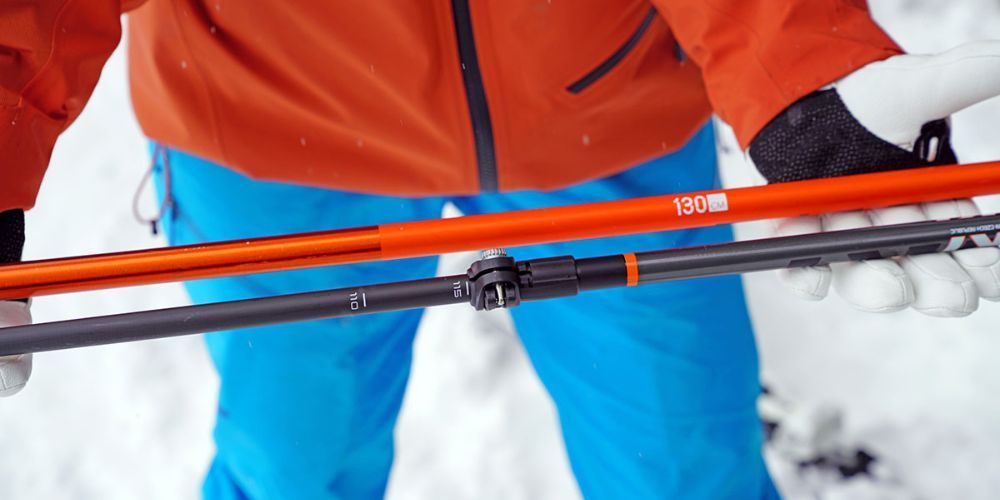
Essential Buying Tips
The first consideration is understanding your skiing style. Each skier has a unique approach, whether you're attacking steep runs with gusto or leisurely gliding along gentle slopes. Aggressive skiers will want sturdier poles that can withstand hard impacts and offer better support during sharp turns. In contrast, relaxed skiers might prefer lightweight options that enhance comfort without weighing them down.
With your skiing style in mind, the next important factor to consider is the adjustability of your poles. Many poles available today come with an adjustable length feature. This versatility allows you to adapt to various skiing conditions effortlessly.
For instance, if you traverse different terrains—from flat areas to steep inclines—having poles that can be extended or shortened ensures optimal performance. You’ll find that the right length makes a significant difference; poles that are too long can hinder balance, while excessively short ones might not provide enough push.
Moving on from functionality, it’s wise to read reviews and user feedback before making a purchase. Platforms like Amazon and specialized ski forums are treasure troves of user insights. Reading about others' experiences with specific pole models can reveal critical details about performance and durability that specs alone might miss. For example, discovering how a pole performed under specific conditions can provide valuable context that helps clarify your choices.
Lastly, don't forget about brand reputation and warranty options when considering your purchase. Established manufacturers often provide products backed by warranties because they respect their craftsmanship and reliability. Take time to explore brands known for their quality ski equipment. Researching companies like LEKI or Black Diamond can lead you to options that enhance not just your skiing experience but also ensure a sound investment in quality over time.
Incorporating these tips into your selection process will undoubtedly empower you to make a more informed decision when purchasing your next pair of ski poles.
By understanding your needs and conducting thorough research, you set yourself up for success on the slopes. Choose wisely and hit the powder with confidence!
AUTHOR
Nature's Playbook
As an Amazon Associate I earn from qualifying purchases.





